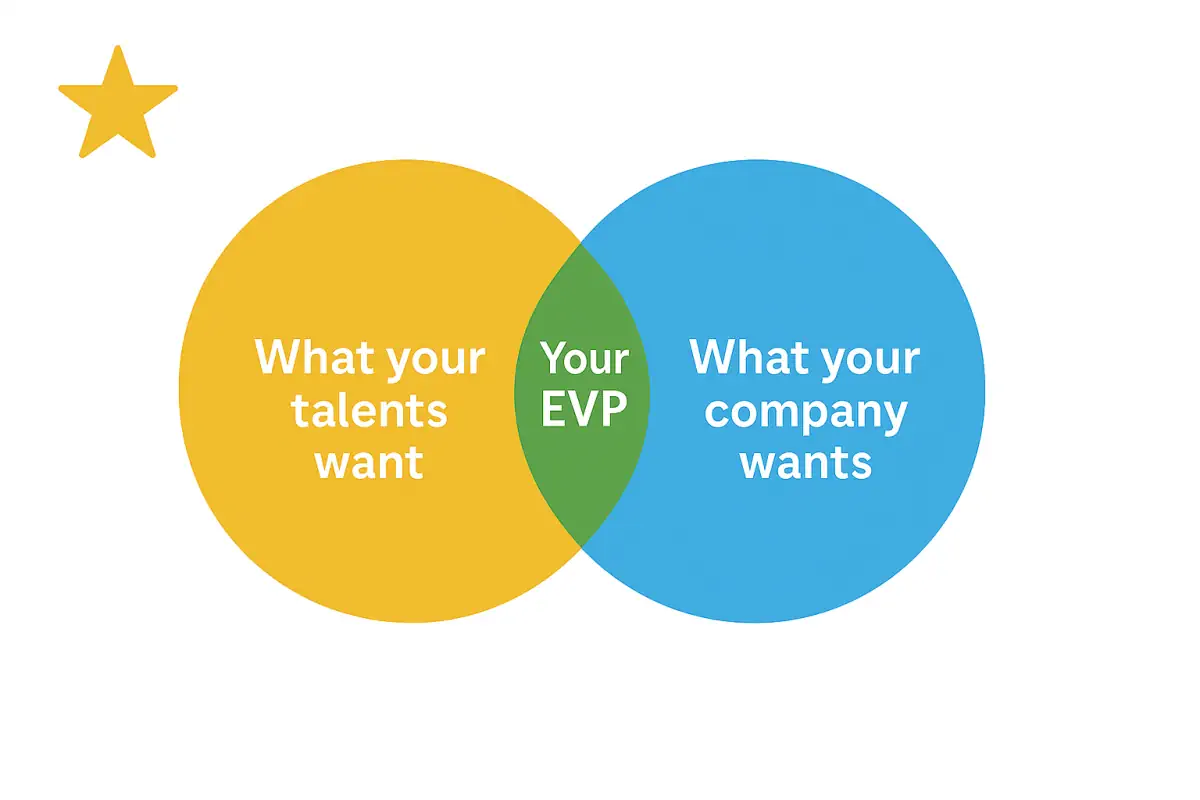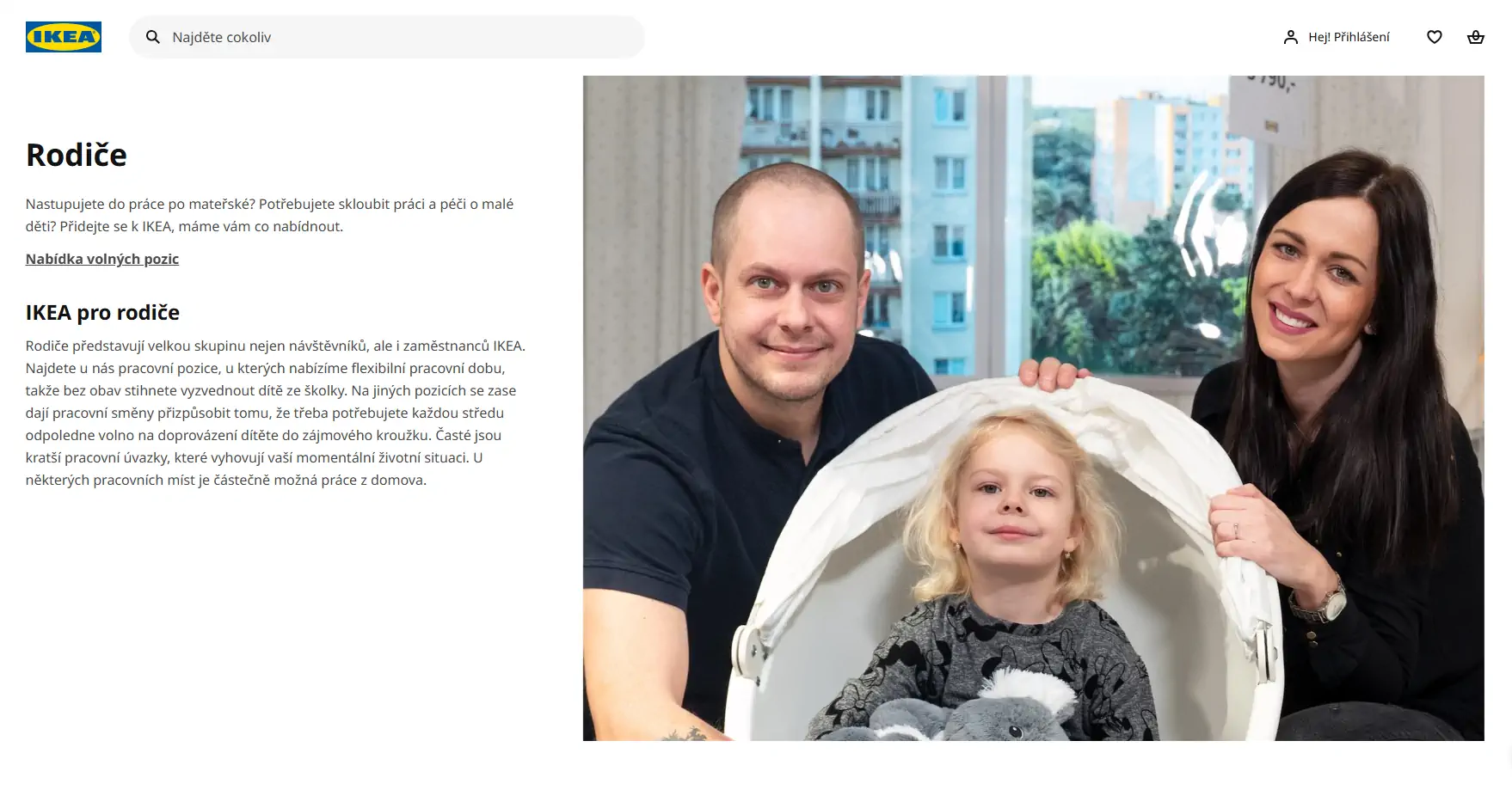Employer branding starts with understanding your people – both current employees and potential candidates. Data allows you to truly understand their needs, expectations and motivations. With relevant data, you can identify key factors that influence employee satisfaction, loyalty and the attractiveness of your company to new candidates.
Autor/ka původní fotografie: Mikael Blomkvist @ Pexels
In the previous article, we discussed why intuition is not enough in employer branding and how to rely on numbers. Now we go deeper and show how to specifically connect people, data, and employer brand into an effective strategy that will deliver long-term results.
Data Empathy: Understanding Employees and Candidates
In employer branding, data does not mean depersonalization, but quite the opposite. Data allows for a deeper understanding of how employees and candidates truly perceive your company.
To obtain this data, you can use, for example, employee surveys, feedback analysis from recruitment processes or in-depth interviews and focus groups.
For example, employee surveys (such as eNPS, engagement, satisfaction) will show you which aspects of work have the greatest impact on employee loyalty.
It may turn out that the key factor is not salary or benefits, but growth and career development opportunities, team relationships or flexible working hours.
Qualitative methods such as in-depth interviews or focus groups will then reveal the deeper causes of these feelings, allowing you to address people’s real needs, not just superficial impressions.
For example, in a software development company, surveys showed that the main reason for dissatisfaction was a lack of recognition for individual work. Based on this finding, management implemented regular team retrospectives that recognized specific contributions from individual employees, which led to increased engagement and overall satisfaction within the team.
The Role of Data in Personalized EVP
Data allows you to create a personalized EVP (Employee Value Proposition) that appeals to different groups of employees based on their specific needs. For example, an experienced technical specialist may need a different EVP, and a college graduate may need a different EVP.
An EVP (Employee Value Proposition) is a unique value proposition that a company offers to its employees – for example, the environment, company culture, benefits, development or meaningful work. It is about why someone should work for your company. When creating an EVP, it is important not only to know your people, but also to analyze the competition – what others offer and how you can differentiate yourself. A strong and authentic EVP will help you attract the right talent and strengthen the loyalty of existing ones.

The basis is segmentation of target groups based on data, for example, dividing employees by career stage.
In a company with a wide range of positions, different variants of EVP emerged – for graduates it included an emphasis on mentoring and development programs, while for experienced workers it emphasized stability, autonomy and leadership opportunities. such as seniority, type of position or preferred benefits.
IKEA is an inspiration (In Czech) in how to create a parent-friendly work environment. It shows that when an employer focuses on people’s real needs, they can offer working conditions that adapt to their life circumstances. For some positions, it offers flexible working hours, thanks to which parents can pick up their children from kindergarten without worrying. In other places, it is common to adjust shifts, for example, so that every Wednesday afternoon is free for children’s hobbies.
How to Measure the Strength of an Employer Brand
For your strategy to be successful, it is necessary to continuously measure its effectiveness.
The strength of an employer brand is reflected in how your company is perceived by current and potential employees – whether it appears as an attractive, trustworthy and inspiring employer.
A strong employer brand attracts talent, reduces recruitment costs, increases employee engagement and loyalty, and contributes to a positive company culture.
Useful metrics according to the RACE model include:
Reach – How effectively we reach our target audience:
- Career website traffic – number of unique visitors, average time spent on site
- Social media impressions and reach – how many potential candidates have seen your posts
- Share of Voice – ratio of mentions of your company as an employer compared to competitors
Act (Interact) – How the target group reacts:
- Click-through rate (CTR) on job postings – the ratio between the number of impressions and clicks
- Social media engagement – comments, shares and reactions to employer-related content
- Number of talent pool registrations or career newsletter subscriptions
Convert – How many people move on to the next stage:
- Number of job applications – mainly high-quality candidates who meet the requirements
- Job application completion rate – how many candidates complete the entire application process
- Cost per Hire – the cost of acquiring one employee through employer branding activities
Engage – How we retain and engage employees:
- Employee Net Promoter Score (eNPS) – the rate at which employees are likely to recommend the company as an employer
- Employee Retention Rate – how long employees stay with the company
- Active Brand Ambassadors – the number and engagement of employees who actively support the brand
A clear dashboard that displays this data helps HR and management track how the brand is doing and where more focus is needed. This kind of dashboard can be created in tools such as Power BI, Google Looker Studio or Tableau.

It should contain key metrics clearly broken down by target groups, time periods, and trends. Ideally, it should also include filtering options (e.g., by department or region) and visualizations that make interpretation easier—for example, eNPS development over time, comparison of retention across teams, or evaluation of candidate experience across different recruitment channels.
Interpreting Data: It’s Not Possible Without People
Although data provides clear answers, their interpretation always requires a human approach. The role of HR and managers is essential in translating data insights into concrete actions – they are the ones who know the context of the teams, the company culture and the specifics of individual work environments.
However, in the spirit of design thinking principles, it is important to involve colleagues from other departments, such as production, sales or customer support, in the interpretation and design of solutions. It is thanks to a multidisciplinary approach that you will gain a broader perspective and ensure that the resulting steps will better correspond to the reality and needs of people across the organization.
For example, in a company, whose problem was low engagement of production operators, the involvement of representatives of this team in workshops brought crucial insights. While management originally planned to invest in benefits, operators pointed out confusion in shift schedules and insufficient communication. Based on this input, the company adjusted planning tools and introduced regular briefings before the shift – and the result was a significant improvement in team satisfaction and performance.
Getting Started – First Steps to Data-Driven Employer Branding
If you want to start systematically using data in your employer branding, you can follow these steps:
- Data Audit: Map what data you already have and what more you need.
- Tool Selection: Decide which data collection and analysis tools you will use (e.g. surveys, interviews, analytical dashboards).
- Dashboard Creation: Ensure a clear display of results.
- Regular Evaluation: Examine data regularly and adjust your strategy based on it.
Summary
Connecting people, data and employer brand is the foundation of a modern employer branding strategy. However, without a human approach to interpreting this data, the strategy would lack depth and effectiveness.
Start small – analyze what you already know, get new data and think about how to translate it into concrete actions.
If you are interested in employer branding in depth or are looking for a partner to build your employer brand, do not hesitate to contact us.
Build Your Employer Brandwith Quality Content
A strong employer brand doesn’t happen by accident. It needs consistent, engaging, and strategically driven content.
That’s exactly what we can help you with. As part of our content service, we’ll create articles, videos, social media posts, and internal communications for you.
Simply put, everything that really brings your brand to life.

I enjoy connecting people who belong together, supporting their cooperation and inspiring them to find new solutions. I help companies create an attractive employer brand. I am interested in design thinking, lean approaches and agile marketing. You can also meet me as a lecturer at our workshops.




